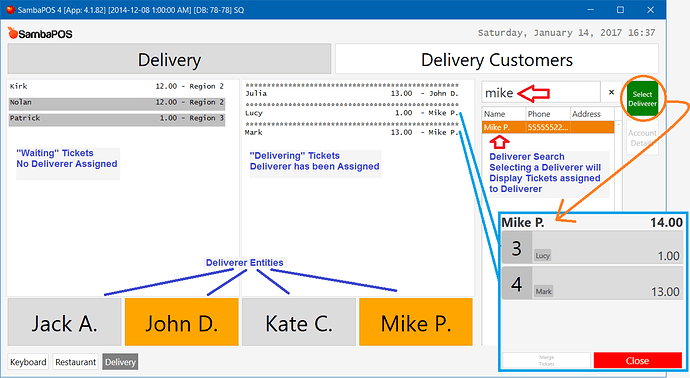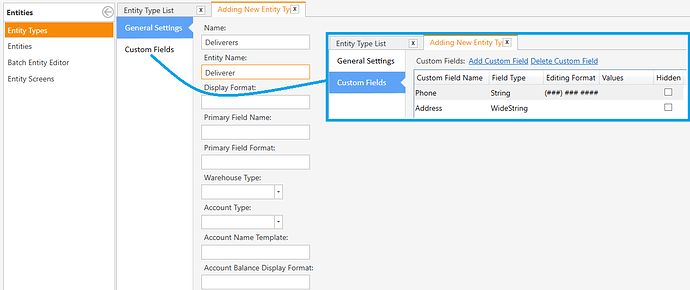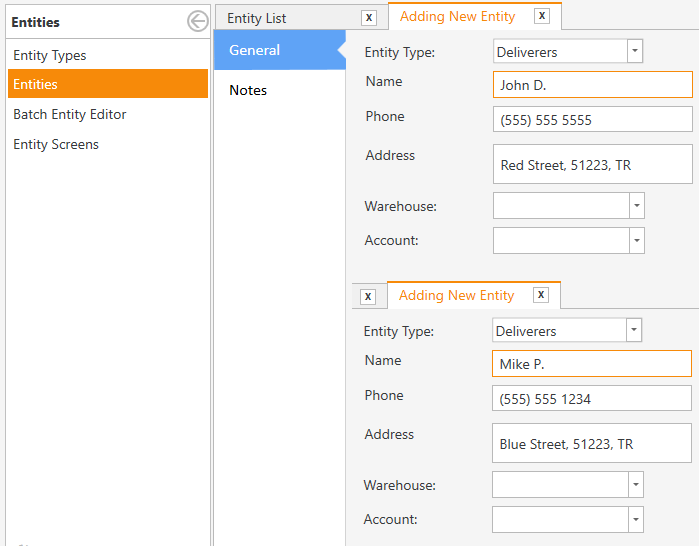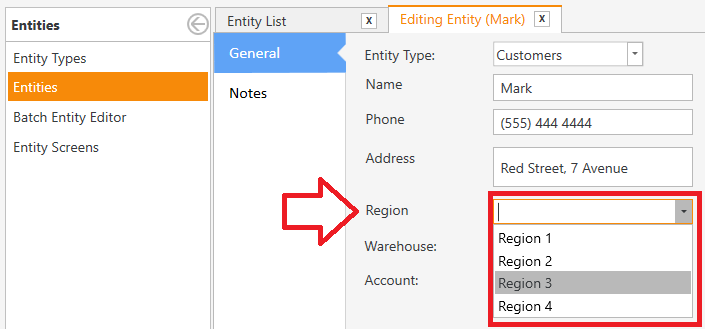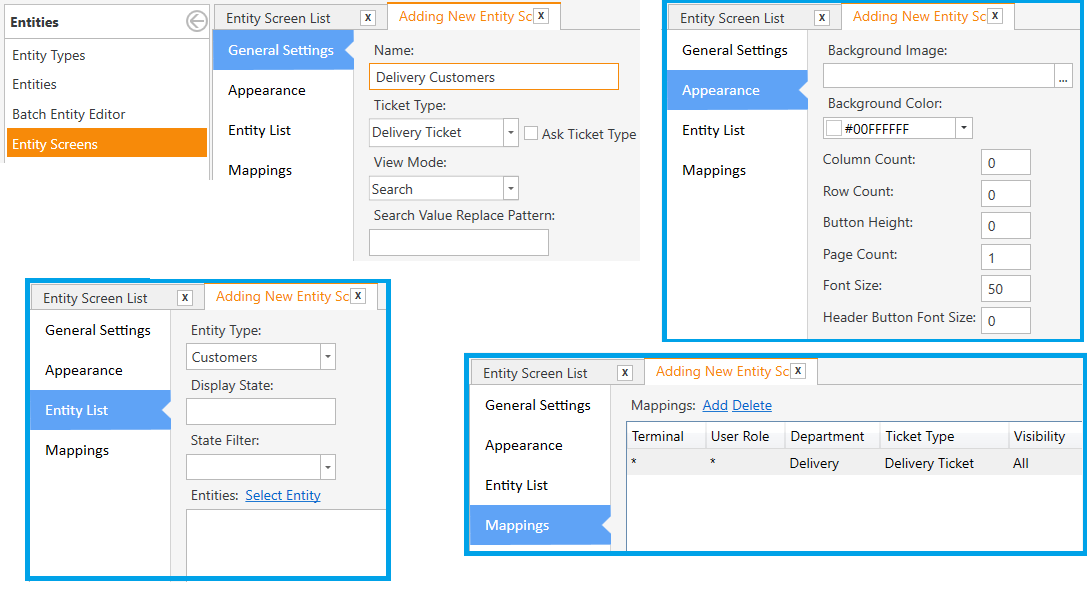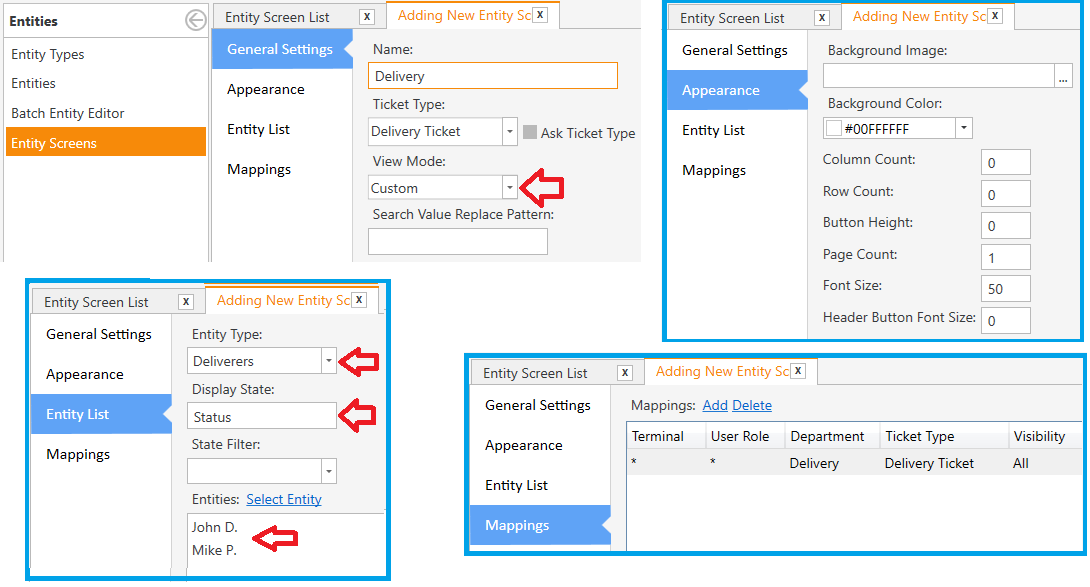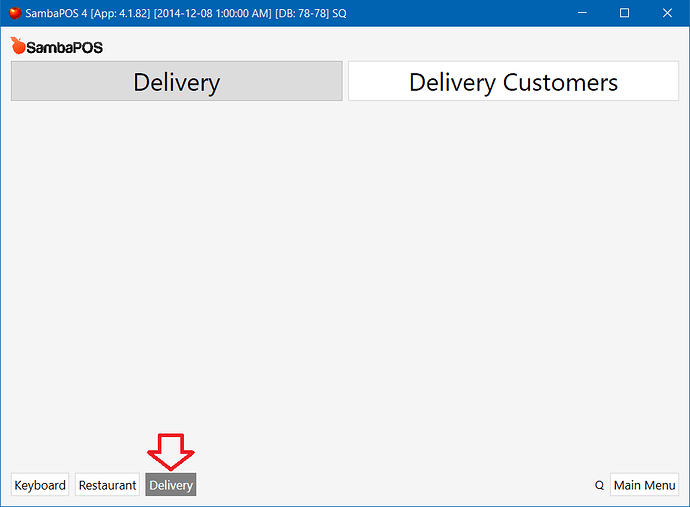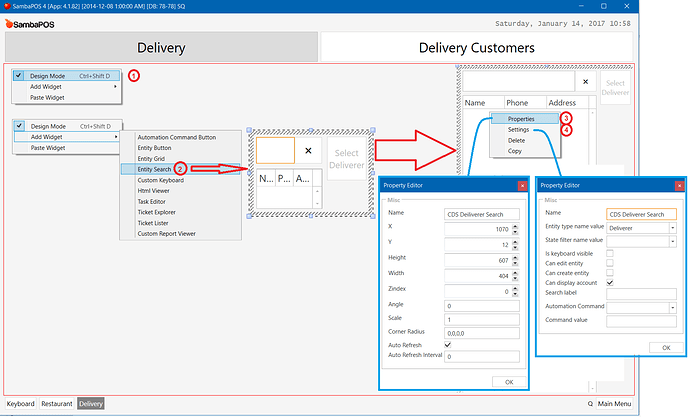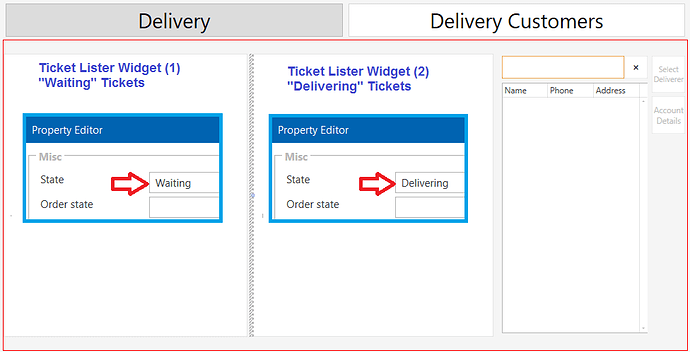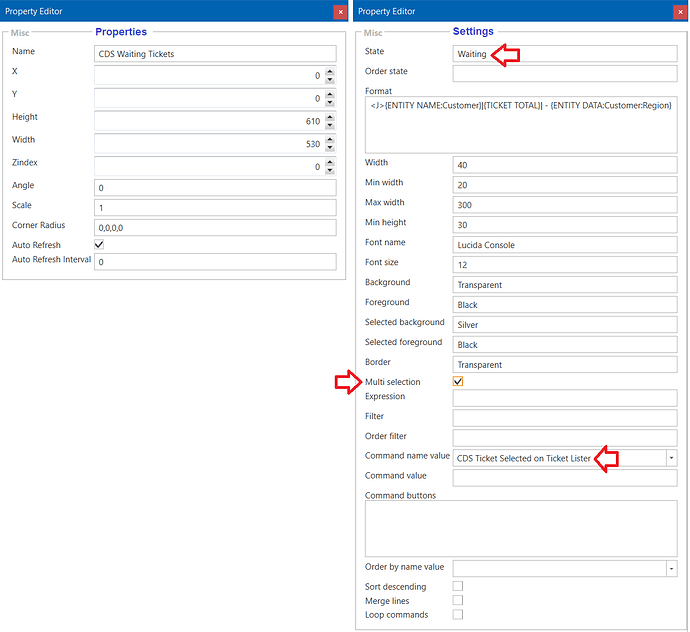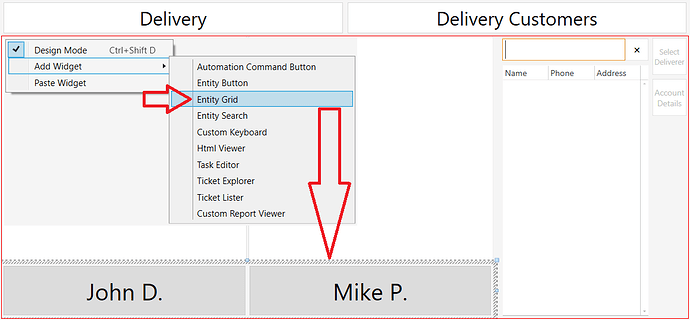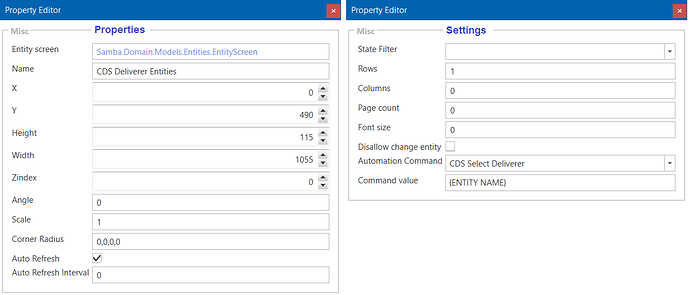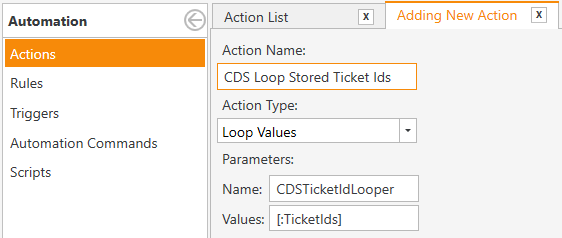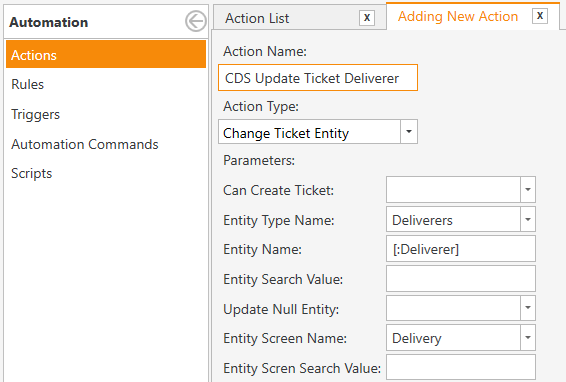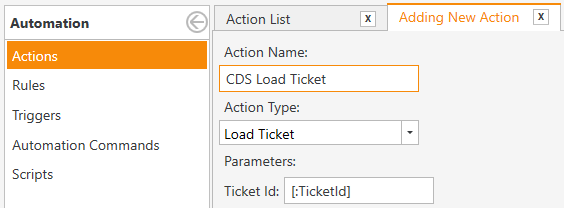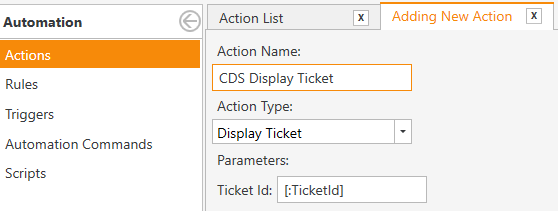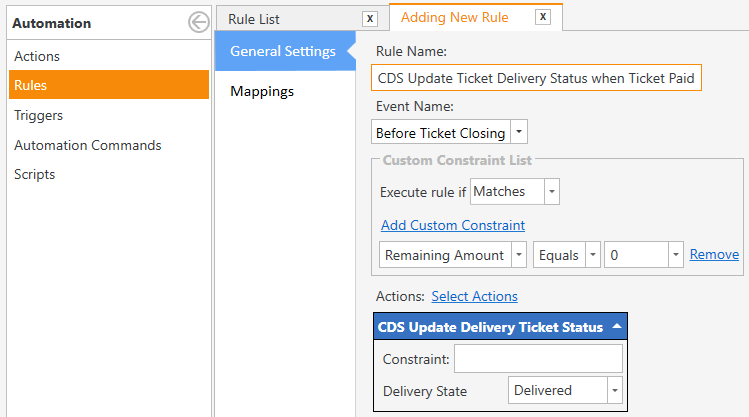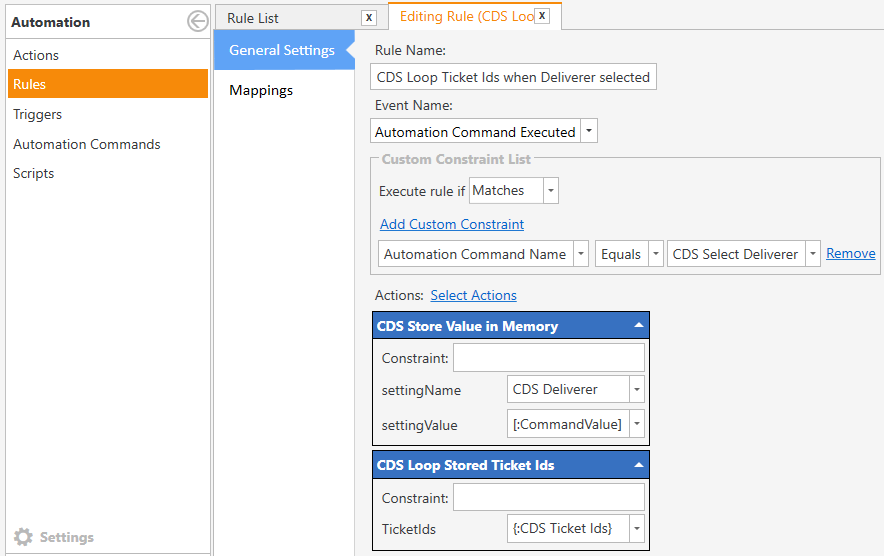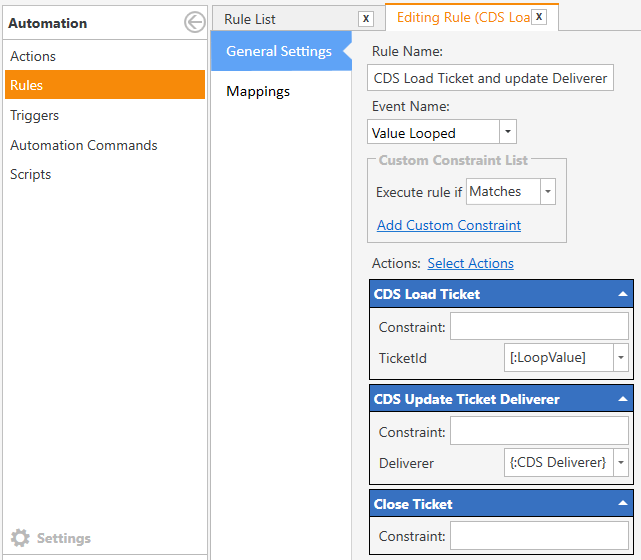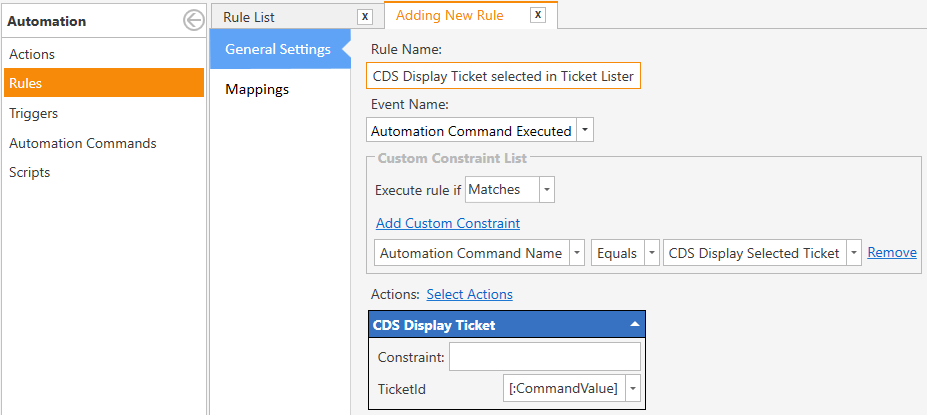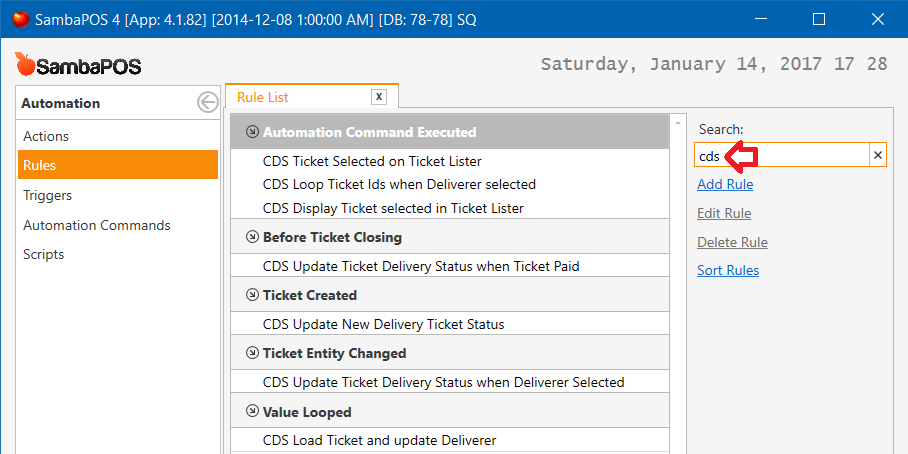#Delivery Entity Screen Widgets
##Entity Search Widget - Deliverer Search
-
Switch to Design Mode (right click on Entity Screen and select Design Mode).
-
Add Entity Search Widget (right click, select Add Widget, then select Entity Search), and drag the Widget to the right side of the Screen.
-
Set Entity Search Widget Properties (right click on Widget and select Properties). You can name the Widget and adjust the size and position.
-
Set Entity Search Widget Settings (right click on Widget and select Settings). Name the Widget and set the parameters as shown.
#Ticket Lister Widgets
Add two Ticket Lister widgets to the screen and position them as displayed here. Ticket Lister Widget is a special widget to list tickets filtered by it’s State. Ticket Lister 1 will display “Waiting” tickets and Ticket Lister 2 will display “Delivering” tickets.
##Ticket Lister Widget (1) - “Waiting” Tickets
Properties and Settings for Ticket Lister 1. When a Ticket is clicked on this Widget, it will execute the command CDS Ticket Selected on Ticket Lister and pass with it the Ticket Id as the Command Value.
Name: CDS Waiting Tickets
State: Waiting
Multi selection: Checked
Command name value: CDS Ticket Selected on Ticket Lister
Format: use Printer Template Formatting Tags in this section to determine what is displayed on the Tickets.
<J>{ENTITY NAME:Customer}|{TICKET TOTAL}| - {ENTITY DATA:Customer:Region}
##Ticket Lister Widget (2) - “Delivering” Tickets
Properties and Settings for Ticket Lister 2. When a Ticket is clicked on this Widget, it will execute the command CDS Display Selected Ticket and pass with it the Ticket Id as the Command Value.
Name: CDS Delivering Tickets
State: Delivering
Command name value: CDS Display Selected Ticket
Format: use Printer Template Formatting Tags in this section to determine what is displayed on the Tickets.
<F>*
<J>{ENTITY NAME:Customer}|{TICKET TOTAL}| - {ENTITY NAME:Deliverer}
#Entity Grid Widget - Deliverer Buttons
Add an Entity Grid Widget and position it at the bottom of the screen.
###Properties and Settings for Deliverer Entity Grid Widget
When a Deliverer Entity button is clicked, it will executed the command CDS Select Deliverer and pass with it the Entity Name as the Command Value.
Name: CDS Deliverer Entities
Automation Command: CDS Select Deliverer
Command value: {ENTITY NAME}
